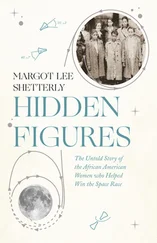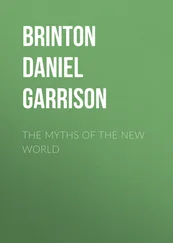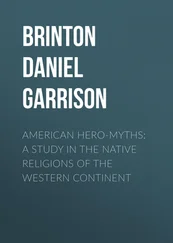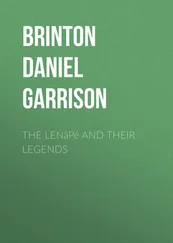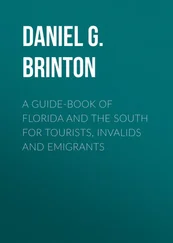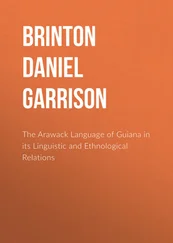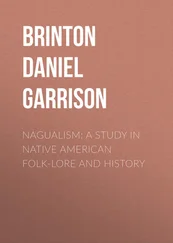Daniel Brinton - The American Race
Здесь есть возможность читать онлайн «Daniel Brinton - The American Race» — ознакомительный отрывок электронной книги совершенно бесплатно, а после прочтения отрывка купить полную версию. В некоторых случаях можно слушать аудио, скачать через торрент в формате fb2 и присутствует краткое содержание. Жанр: foreign_antique, История, История, foreign_edu, на английском языке. Описание произведения, (предисловие) а так же отзывы посетителей доступны на портале библиотеки ЛибКат.
- Название:The American Race
- Автор:
- Жанр:
- Год:неизвестен
- ISBN:нет данных
- Рейтинг книги:4 / 5. Голосов: 1
-
Избранное:Добавить в избранное
- Отзывы:
-
Ваша оценка:
- 80
- 1
- 2
- 3
- 4
- 5
The American Race: краткое содержание, описание и аннотация
Предлагаем к чтению аннотацию, описание, краткое содержание или предисловие (зависит от того, что написал сам автор книги «The American Race»). Если вы не нашли необходимую информацию о книге — напишите в комментариях, мы постараемся отыскать её.
The American Race — читать онлайн ознакомительный отрывок
Ниже представлен текст книги, разбитый по страницам. Система сохранения места последней прочитанной страницы, позволяет с удобством читать онлайн бесплатно книгу «The American Race», без необходимости каждый раз заново искать на чём Вы остановились. Поставьте закладку, и сможете в любой момент перейти на страницу, на которой закончили чтение.
Интервал:
Закладка:
The psychic identity of the Americans is well illustrated in their languages. There are indeed indefinite discrepancies in their lexicography and in their surface morphology; but in their logical substructure, in what Wilhelm von Humboldt called the “inner form,” they are strikingly alike. The points in which this is especially apparent are in the development of pronominal forms, in the abundance of generic particles, in the overweening preference for concepts of action (verbs), rather than concepts of existence (nouns), and in the consequent subordination of the latter to the former in the proposition. This last mentioned trait is the source of that characteristic which is called incorporation . The American languages as a rule are essentially incorporative languages, that is, they formally include both subject and object in the transitive concept, and its oral expression. It has been denied by some able linguists that this is a characteristic trait of American languages; but I have yet to find one, of which we possess ample means of analysis, in which it does not appear in one or another of its forms, thus revealing the same linguistic impulse. Those who reject it as a feature have been led astray either by insufficient means of information about certain languages, or by not clearly comprehending the characteristics of the incorporative process itself. 62 62 I have treated this subject at considerable length in opposition to the opinion of Lucien Adam and Friedrich Müller in my Essays of an Americanist , pp. 349-389 (Philadelphia, 1890).
As intimated, however, in spite of this underlying sameness, there is wide diversity in the tongues themselves. Where we cannot find sufficient coincidences of words and grammar in two languages to admit of supposing that under the laws of linguistic science they are related, they are classed as independent stocks or families. Of such there are about eighty in North and as many in South America. These stocks offer us, without doubt, our best basis for the ethnic classification of the American tribes; the only basis, indeed, which is of any value. The efforts which have been heretofore made to erect a geographic classification, with reference to certain areas, political or physical; or a craniological one, with reference to skull forms; or a cultural one, with reference to stages of savagery and civilization, have all proved worthless. The linguistic is the only basis on which the subdivision of the race should proceed. Similarity of idioms proves to some extent similarity of descent and similarity of psychic endowments. Of course, there has been large imposition of one language on another in the world’s history; but never without a corresponding infiltration of blood; so that the changes in language remain as evidence of national and race comminglings. I select, therefore, the linguistic classification of the American race as the only one of any scientific value, and, therefore, that which alone merits consideration.
The precise number of linguistic stocks in use in America at the discovery has not been made out. In that portion of the continent north of Mexico the researches of the Bureau of Ethnology of the United States have defined fifty-nine stocks, no less than forty of which were confined to the narrow strip of land between the Rocky mountains and the Pacific ocean.
For convenience of study I shall classify all the stocks into five groups, as follows:—
I. The North Atlantic Group.
II. The North Pacific Group.
III. The Central Group.
IV. The South Pacific Group.
V. The South Atlantic Group.
This arrangement is not one of convenience only; I attach a certain ethnographic importance to this classification. There is a distinct resemblance between the two Atlantic groups, and an equally distinct contrast between them and the Pacific groups, extending to temperament, culture and physical traits. Each of the groups has mingled extensively within its own limits, and but slightly outside of them. Each is subject to conditions of temperature, altitude and humidity, which are peculiar to itself, and which have exerted definite influences on the constitution and the history of its inhabitants. Such a subdivision of the race is therefore justified by anthropologic considerations.
NORTH AMERICAN TRIBES
I. THE NORTH ATLANTIC GROUP
1. THE ESKIMOS
The word Eskimo, properly Eski-mwhan , means in the Abnaki dialect of Algonquin, “he eats raw flesh,” and was applied to the tribe from its custom of consuming fish and game without cooking. They call themselves Innuit , “people,” a term the equivalent of which is the usual expression applied by American natives to their own particular stock.
The Innuit are at present essentially a maritime and arctic nation, occupying the coast and adjacent islands from the Straits of Belle Isle on the Atlantic to Icy Bay, at the foot of Mount St. Elias on the Pacific, and extending their wanderings and settlements as far up Smith’s Sound as N. Lat. 80°, where they are by far the northernmost inhabitants of the earth. They have occupied Greenland for certainly more than a thousand years, and were the earliest settlers in some of the Aleutian islands. Portions of them at some remote period crossed Behring Strait and settled on Asiatic soil, while others established themselves along the shores of Newfoundland. Indeed, from the reports of the early Norse explorers and from the character of relics found on the Atlantic coast, it is probable that they once extended as far south as the mouth of the Delaware river. 63 63 Packard, “Notes on the Labrador Eskimo and their former range southward,” in American Naturalist , 1885, p. 471.
Their ancestors quite possibly dwelt on the moors of New England when the reindeer browsed there, and accompanied that quadruped in his final migration to the north. They belong in history and character to the Atlantic peoples.
This question, as to where their common progenitors resided, has been much discussed. A favorite theory of some writers has been that they migrated out of Asia by way of Behring Strait; but those who have studied their culture on the spot do not advocate this opinion. These observers have, without exception, reached the conclusion that the Innuit were originally an inland people, that their migrations were toward the north and west, and that they have been gradually forced to the inhospitable climes they occupy by the pressure of foes. Dr. Rink, who passed many years among them, would look for their early home somewhere in Alaska; but Mr. John Murdoch and Dr. Franz Boas, two of our best authorities on this tribe, incline to the view that their primal home was to the south of Hudson Bay, whence they separated into three principal hordes, the one passing into Labrador and reaching Greenland, the second moving to the coast of the Arctic sea, and the third to Alaska. These form respectively the Greenland, the Chiglit and the Kadjak dialects of the common tongue. 64 64 John Murdoch, in The American Anthropologist , 1888, p. 129; also Dr. Henry Rink, The Eskimo Tribes (London, 1887); Dr. Franz Boas, The Central Eskimo , in the Sixth Annual Report of the Bureau of Ethnology; W. H. Dall, Tribes of the Extreme Northwest (Washington, 1887); Ivan Petroff, in The American Naturalist , 1882, p. 567.
The closest observers report the physical traits of the Eskimos as thoroughly American and not Asian, as has sometimes been alleged. 65 65 Dall is positive that there is no racial distinction between the Innuit and the other American Indians, loc. cit., p. 95. He adds: “The Tartar, Japanese or Chinese origin of these people finds no corroboration in their manners, dress or language.”
In appearance the Innuits of pure blood are of medium or slightly undersize, color dark, nose prominent and sometimes aquiline, hair dark brown or black, moderately strong on the face, the pubes and in the axilla; the eyes are dark brown and occasionally blue. The skull is generally long (dolichocephalic), but is subject to extensive variations ranging from almost globular to exceptionally long and narrow specimens. 66 66 Commander G. Holm found the East Greenlanders, a pure stock, well marked mesocephalic, with a maximum of 84.2 ( Les Grönlandais Orientaux , p. 365, Copenhagen, 1889). Dall gives the range to his measurements of Innuit skulls from 87 to 70 ( Contributions to American Ethnology , Vol. I, p. 71).
Интервал:
Закладка:
Похожие книги на «The American Race»
Представляем Вашему вниманию похожие книги на «The American Race» списком для выбора. Мы отобрали схожую по названию и смыслу литературу в надежде предоставить читателям больше вариантов отыскать новые, интересные, ещё непрочитанные произведения.
Обсуждение, отзывы о книге «The American Race» и просто собственные мнения читателей. Оставьте ваши комментарии, напишите, что Вы думаете о произведении, его смысле или главных героях. Укажите что конкретно понравилось, а что нет, и почему Вы так считаете.

